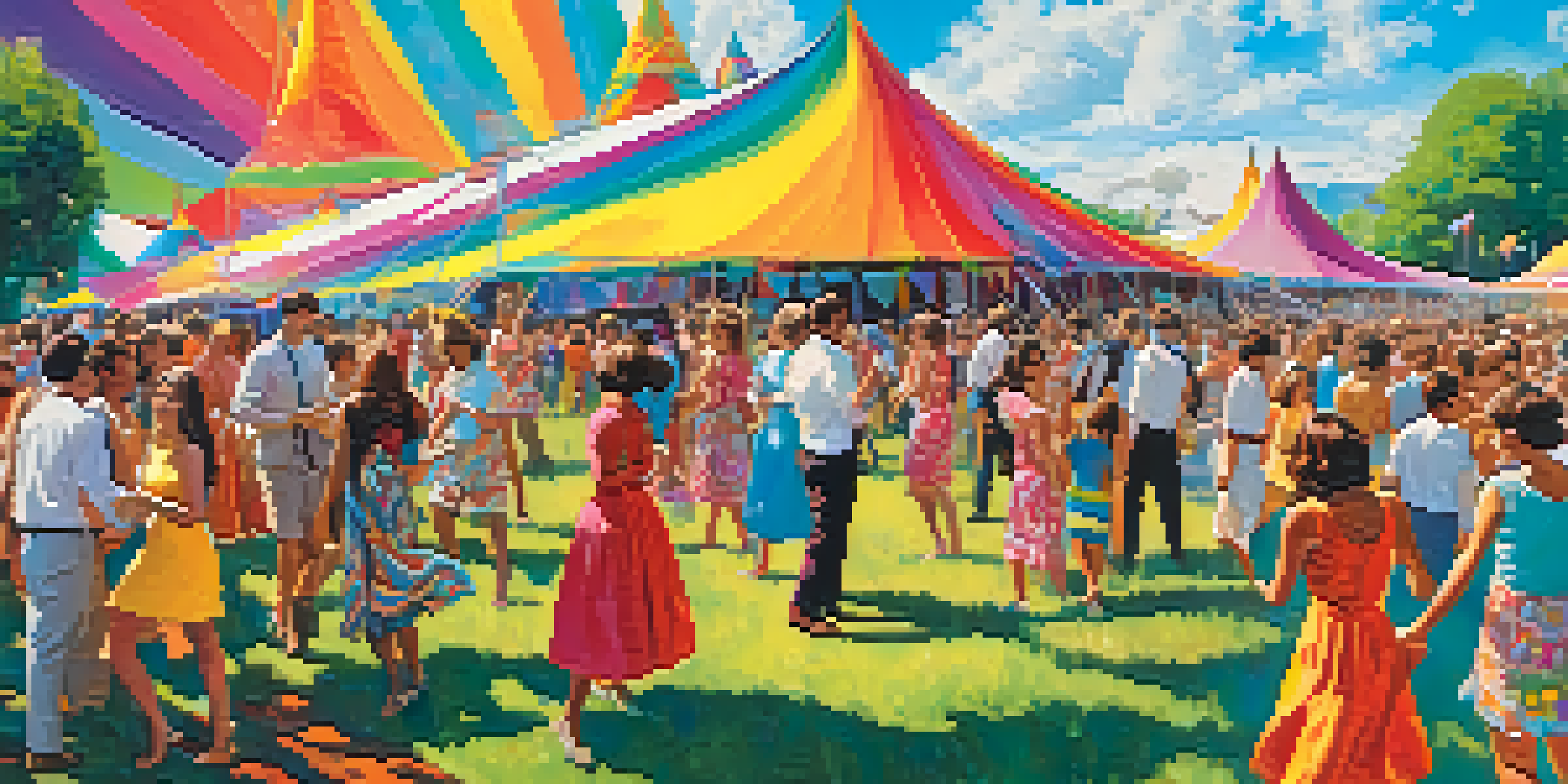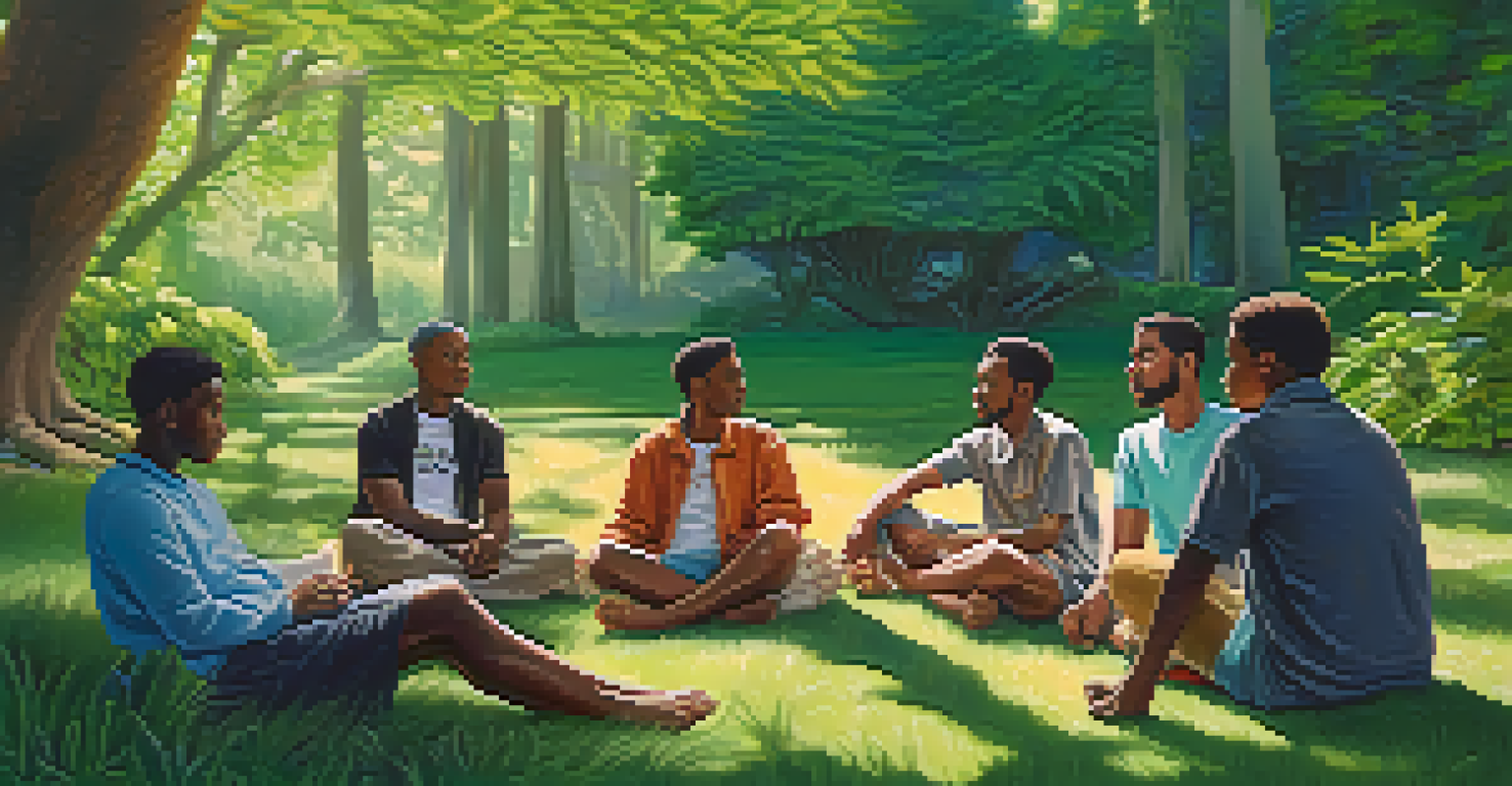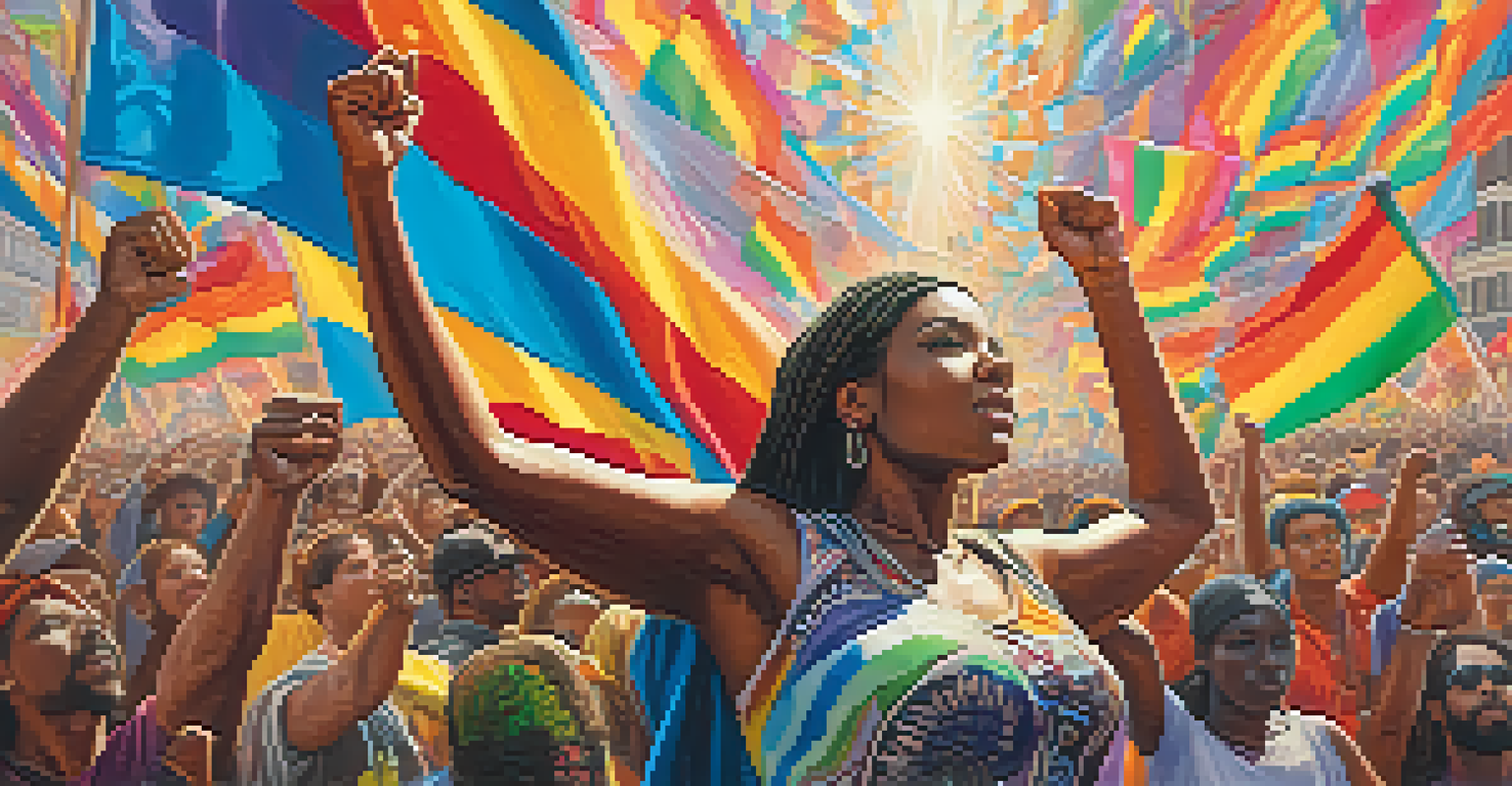Entheogens in the 1960s: Psychedelics and Civil Rights Movements

The Rise of Psychedelics in the 1960s Counterculture
In the 1960s, psychedelics like LSD and psilocybin mushrooms gained popularity, especially among the youth. This era marked a significant shift in cultural norms as young people sought new experiences and broader consciousness. Psychedelics were often viewed as tools for expanding the mind and exploring deeper truths about existence.
I think that we are not only the products of our environments, but also the creators of our environments.
The counterculture movement embraced these substances, seeing them as a means of liberation from societal constraints. Music festivals, art, and literature from this period often reflected the psychedelic experience, promoting ideas of peace, love, and unity. Figures like Timothy Leary advocated for the use of these substances, famously urging people to 'turn on, tune in, drop out.'
As the movement grew, so did the connection between psychedelics and various social causes, including civil rights. Many activists believed that these substances could foster empathy and understanding, essential qualities for challenging systemic injustices.
Psychedelics and the Civil Rights Movement
The civil rights movement of the 1960s aimed to end racial discrimination and promote equality. Activists like Martin Luther King Jr. and Malcolm X led the charge, but they also faced significant opposition. During this tumultuous time, some individuals within the movement began to explore how psychedelics could aid their cause.

Psychedelics were thought to enhance feelings of connectedness and compassion, which resonated deeply with the principles of the civil rights movement. For instance, some activists reported that psychedelics helped them better understand their own biases and the struggles faced by others. This introspective journey was seen as a powerful complement to their activism.
Psychedelics and Social Movements
Psychedelics played a pivotal role in the 1960s counterculture, enhancing feelings of connectedness and empathy among activists in the civil rights and anti-war movements.
Moreover, the shared experience of psychedelics among diverse groups helped to break down barriers. It fostered a sense of unity among people from different backgrounds, encouraging collaboration in the fight for civil rights.
The Influence of Psychedelic Music on Activism
Music played a pivotal role in the 1960s, acting as both a soundtrack and a catalyst for social change. Genres like rock and folk saw a surge in psychedelic influences, with bands like The Grateful Dead and Jefferson Airplane leading the charge. Their music often contained themes of love, peace, and social justice, resonating with the ideals of the civil rights movement.
The greatest gift of the psychedelic experience is the ability to see beyond our own personal limitations and connect with others in profound ways.
Lyrics that echoed the struggles for equality and freedom created a sense of solidarity among listeners. Songs became anthems for protests, reinforcing the message of unity and change. Musicians frequently spoke openly about their experiences with psychedelics, encouraging fans to explore their own consciousness.
This musical backdrop provided a unique platform for activists, merging art with activism. The psychedelic soundscapes not only entertained but also inspired a generation to take action and fight for a more just society.
Psychedelics and the Anti-War Movement
As the civil rights movement gained momentum, the anti-war movement also emerged in response to the Vietnam War. Many young people, disillusioned by the conflict, turned to psychedelics as a means of protest and self-exploration. They believed that expanding their consciousness could lead to greater awareness of societal issues.
The use of psychedelics in this context was seen as a form of resistance against oppressive systems, including militarism and racism. Activists often organized events that combined anti-war messages with psychedelic experiences, creating a unique blend of art, spirituality, and political activism. This approach emphasized the idea that peace and love could triumph over violence and hatred.
Impact of Psychedelic Music
Music infused with psychedelic themes became anthems for social change, uniting people under the ideals of love, peace, and justice during a time of upheaval.
Moreover, this intersection of psychedelics and anti-war sentiments helped to galvanize a broader coalition of activists. The message of peace resonated with civil rights supporters, fostering an environment where different causes could unite and strengthen each other's efforts.
The Role of Women in Psychedelic Activism
Women played an essential role in the psychedelic movement and its intersection with civil rights. Figures like Joan Baez and Janis Joplin used their platforms to advocate for both social justice and the use of psychedelics. Their music and activism inspired countless others to join the cause, highlighting the significance of female voices in these movements.
In many ways, women were at the forefront of the psychedelic experience, organizing events and discussions that centered around equality and consciousness expansion. They challenged societal norms and fought against the patriarchy, making their mark in both the counterculture and civil rights movements.
This dual activism not only empowered women but also emphasized the importance of inclusivity in social justice efforts. By bringing attention to issues like gender equality, these women helped ensure that the fight for civil rights encompassed all marginalized groups.
Legal and Social Backlash Against Psychedelics
Despite the positive associations with psychedelics during this era, there was considerable backlash. By the late 1960s, the government began to crack down on the use of these substances, viewing them as a threat to societal order. The Controlled Substances Act of 1970 marked a significant turning point, criminalizing many psychedelics and stifling experimentation.
This legal action was often intertwined with racial and social prejudices, as many users were part of marginalized communities or counterculture groups. The crackdown not only targeted drug use but also sought to suppress the voices advocating for change. As a result, many activists were arrested, further intensifying the struggle for civil rights.
Legacy of Psychedelics Today
The conversation around psychedelics has resurfaced, highlighting their potential therapeutic benefits and the importance of inclusivity in modern social justice movements.
The stigmatization of psychedelics led to a fragmentation of the movement, as some activists shifted their focus away from these substances. However, the legacy of their use continued to influence future generations, paving the way for renewed discussions around psychedelics and social justice.
The Legacy of Psychedelics in Modern Activism
Today, the legacy of psychedelics from the 1960s can be seen in various modern movements. As society becomes more open to discussing mental health and wellness, psychedelics have re-entered the conversation as potential therapeutic tools. Many activists and researchers advocate for their responsible use, linking them back to the ideals of connection and empathy that were prominent in the 1960s.
Current movements for social justice continue to draw inspiration from the past, with many recognizing the potential of psychedelics to foster understanding and compassion. This connection is particularly relevant in discussions around systemic issues like racism, where empathy can play a crucial role in creating change.

Furthermore, the dialogue surrounding psychedelics has evolved, with a growing emphasis on inclusivity and equity. Modern activists are working to ensure that the benefits of psychedelics are accessible to all, especially marginalized communities that were historically targeted by drug policies. This resurgence highlights the enduring influence of the 1960s on contemporary activism.